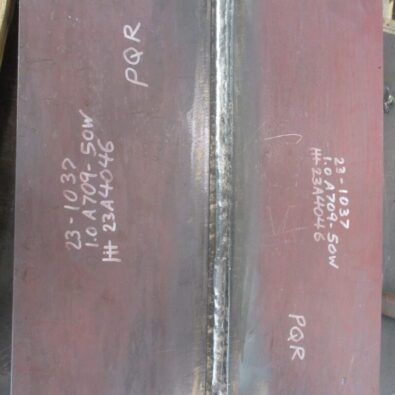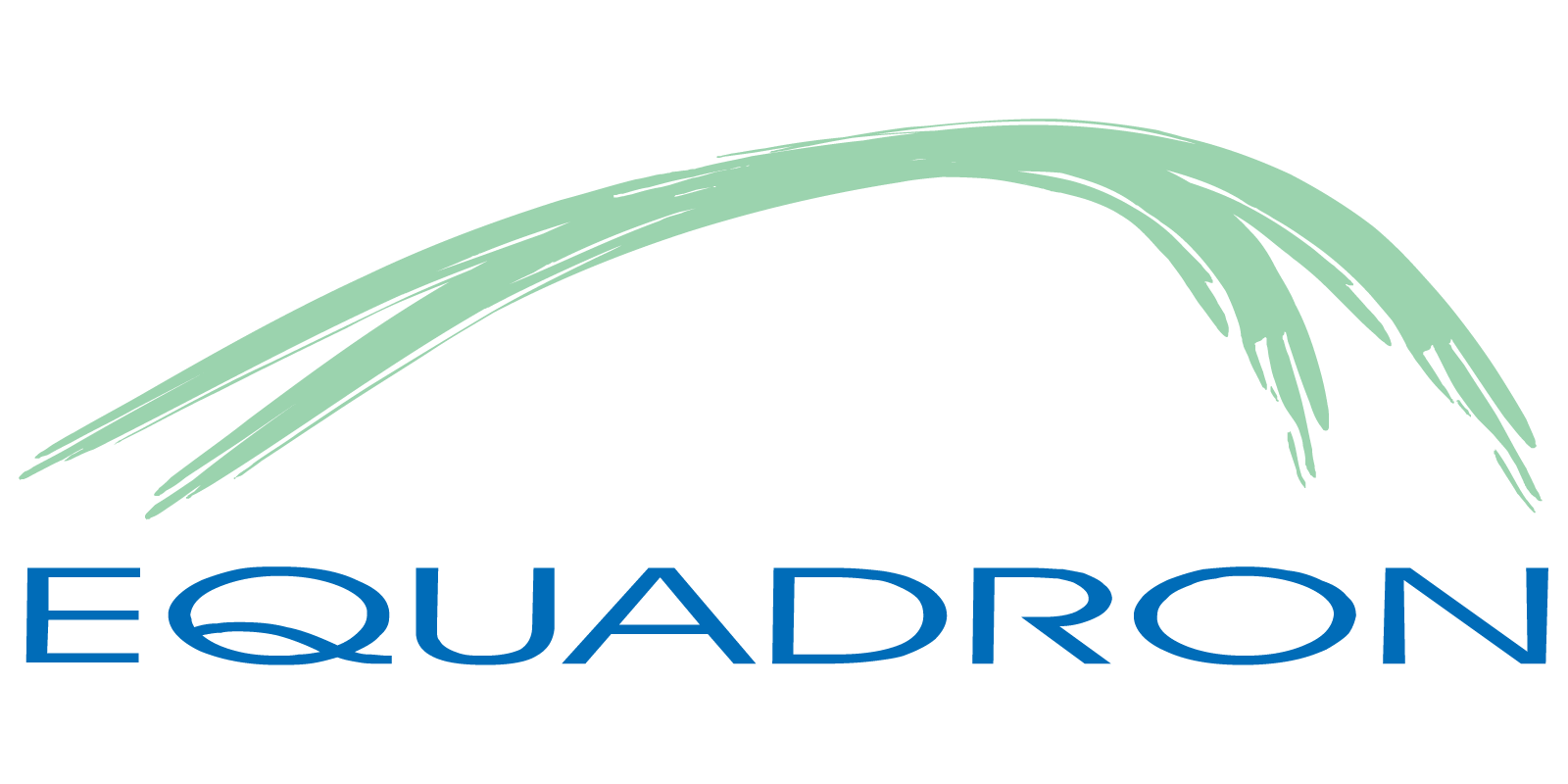As a standard for shop and field welding of steel bridges, the AWS D1.5 code outlines the requirements to ensure welded structures’ safety, durability, and quality. Preparing a Procedure Qualification Record (PQR) that complies with AWS D1.5 is a rigorous process where steel shops demonstrate their capacity to join metals meeting the bridge performance requirements.
Proper understanding and selection of essential variables such as base metal, consumables, welding process, and types of joints and welds is imperative to optimize the ultimate outcome:
“Elaborate all the welding procedure specifications (WPSs) required for the bridge while minimizing the number of PQR test plates to weld and mechanically test.”
This article walks you through each step in developing a compliant and optimal PQR.
1. Essential Variables
Essential variables in welding represent the factors that can influence the mechanical properties of a weld. The AWS D1.5 code mandates strict control over these variables during test plate preparation and production welding.
Essential variables dictate whether the fabricators’ current PQRs and WPSs are valid for a new project. If the project uses different base metals or has supplementary welding requirements, steel shops must develop new PQRs. The challenge is finding the optimal combination of materials, joints, and welding processes that minimize the number of PQRs to develop.
The most common essential variables include:
- Base metal;
- Position, joint, and weld type;
- Welding process;
- Consumable; and
- Mechanical testing.
Only those PQRs aligned with the essential variables are suitable for a specific project. If the existing PQR essential variables differ from the project requirements, the steel shop must prove its capacity to weld meeting the project requirements by developing a new PQR.
2. Base metal
AWS D1.5 applies to the welding of base metals 3 mm and thicker. The code includes a list of approved base metals including grades (i.e., yield strength) from 250 to 690 MPa. The list also includes base metals with additional properties such as corrosion resistance (i.e., weathering steel) or high-performance steel.
The selected material should match the IFC drawings and project specification requirements, and the PQR must detail the type, grade, and specifications for all base metals used.
Consider base metals that allow a wider array of compatibility with the rest of the steel required for the project. This information can be found in the AWS D1.5 table titled Base Metal Options for WPS Qualification Test Plate.
3. Position, joint, and weld type
Most projects require up to four welding positions: flat, horizontal, vertical up, and overhead. The types of welded joints are butt, corner, T, lap, or edge and the types of welds are groove, fillet, plug, slot, surface, and edge.
A thorough review of the IFC drawings’ connection details is key to assessing the number of PQRs needed to cover all the welding positions, joints, and welds needed for the project. Each weld position for production welding requires testing its own PQR test plate. Nevertheless, some essential variables have a wider qualification reach than others. For instance, if a complete joint penetration (CJP) groove weld, butt joint test plate is successfully welded and mechanically tested in the flat position, all these other variables are considered qualified:
- Positions: flat and horizontal for single pass fillet and groove welds (i.e., 1F, 2F, 1G, and 2G);
- Joints: all of them;
- Welds: partial joint penetration (PJPs) welds, single pass fillet welds, surface, and edge welds.
4. Welding process
The selection of welding processes has a direct impact on the number of PQRs to be developed. The most common welding processes for bridge fabrication are Flux Cored Arc Welding (FCAW), Submerged Arc Welding (SAW), and Shielded Metal Arc Welding (stick or SMAW).
Only SMAW joints are considered prequalified within some limitations in AWS D1.5. This advantage must be assessed against its low productivity rate if compared to FCAW and SAW.
This article focuses on the PQR requirements for the most common welding processes requiring procedure qualification: FCAW and SAW.
5. Consumable
The options for consumable selection depend on the project requirements, the base metals, and the welding processes available at the shop or in the field. The rule of thumb is the yield strength of the consumable (i.e., grade) exceeds the base metal one.
Some projects require consumables with special attributions such as toughness or low-hydrogen designation. The AWS D1.5 table titled Matching Filler Metals for WPSs defines what consumables should be selected for each welding process and base metal combination.
6. Procedure qualification
AWS D1.5 allows three methods to qualify welding procedures. This means that there are three ways steel shops may weld test plates and record the required data to demonstrate their capacity to deposit sound welds:
- Maximum heat input qualification test;
- Maximum and minimum heat input qualification test; and
- Production procedure qualification.
Each method includes its own set of limitations for essential variables. The most common method is the maximum heat input qualification test. In this case, the test plate is cut, fit, and welded following the requirements in the figure titled WPS Qualification or Pretest – Test Plate A. Regardless of the method chosen, a state representative or independent third party acceptable to the state must witness the test plate welding and machining.
7. Mechanical testing
Before preparing mechanical test specimens, the test plate must be radiographed and assessed against the RT inspection acceptance criteria provisions.
The number and type of mechanical tests for each test plate are detailed in the table titled Required Number of Test Specimens – WPS Qualification. The most common case, Test Plate A, involves the following testing program:
- One All Weld Metal Tension Test;
- Two Reduced Section Tension Tests;
- Four Side Bend Tests; and
- Five Charpy V-notch Tests.
This testing program is the default option to verify that the WPS produces the strength, ductility, and toughness for the consumable tested. Some project specifications may require supplementary testing such as heat-affected zone (HAZ) and hardness testing. In this case, the acceptance criteria must be included in the project specification.
8. WPS/PQR package
Once the PQR test plate is successfully tested, it is time to prepare the WPS/PQR Package for the project. This exercise consists of developing all the WPSs within the limitations of the essential variables for a specific PQR test plate.
A typical WPS/PQR package submitted by a steel shop for the Engineer’s approval consists of the following:
- The procedure qualification record sheet summarizing all the essential variables, welding parameters, RT, and mechanical test results.
- The laboratory mechanical test results.
- The radiography test report.
- The MTCs for the materials used to weld the test plates: base metal, backing bar, consumable, and inert gas.
- The WPSs for each type of weld, joint, position, base metal combination, consumable, etc. within the limitations of the PQR they are based on.
For complex projects involving the development of multiple PQRs and WPSs, it is recommended to prepare an Excel spreadsheet detailing the essential variables for each PQR and corresponding WPS.

